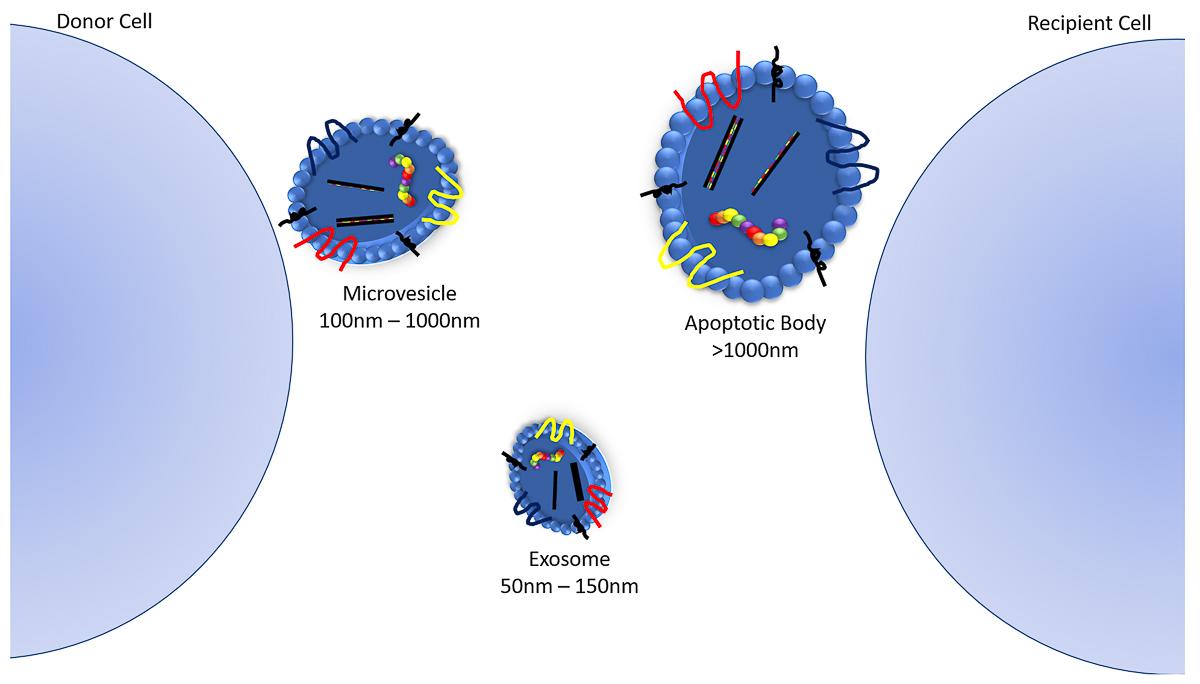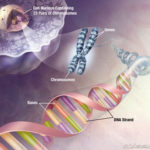Researchers Discover a Potential Cause for Keratoconus
Cells in the body communicate with each other by sending extracellular vesicles, tiny membrane-bound messages. The study of these vesicles, also known as EVs, is rapidly growing across many scientific fields globally, as researchers investigate their potential use in medical diagnostics and therapy. Various studies have already looked into the use of EVs in a broad range of applications, including cancer diagnosis and treatment, as well as skin wrinkle reduction.
A recent study has been published that is centered on EVs and was co-authored by a researcher at The University of North Texas Health Science Center located in Fort Worth, which includes The North Texas Eye Research Institute.
Dr. Dimitrios Karamichos has been investigating the connection between keratoconus , a specific eye disease, and EVs found in tears. In a breakthrough discovery, Karamichos and his research team have successfully identified, isolated, and analyzed tear EVs in individuals affected by the disease. Their findings have the potential to answer the long-standing question of what causes this debilitating eye condition and how to treat it.
I think this study is only the beginning of a massive unexplored area of research in the context of keratoconus, said Karamichos, who is executive director of the Eye Institute. “If we can understand the role of EVs in keratoconus, we will unlock a slew of potential drug development and therapeutic options that can have a profound impact on the lives of patients who suffer from this condition.
What Is Keratoconus?
Keratoconus is a condition in which the cornea, the clear and dome-shaped front part of the eye, becomes thin and bulges outward into a cone shape, leading to blurry and distorted vision. If left unchecked, the condition can cause scarring on the cornea and result in severe vision impairment or even blindness.
The cause of keratoconus is unknown, however, the majority of researchers believe it is a result of genetics, hormonal imbalances, and external elements like allergies and excessive eye rubbing. This eye disease usually develops during late childhood or early adulthood and stops progressing around ages 40 to 45. In some cases where severe scarring occurs, a corneal transplant may be necessary for the patient.
Dr. Dimitrios Karamichos is a leading expert in the field of keratoconus research. He has made significant contributions to the understanding of this eye disease, including the identification of a predictive biomarker, the examination of hormones contributing to its development, and exploring the connection with Down syndrome.
The Link Between EV Tears and Keratoconus
In a recent study, Dr. Dimitrios Karamichos and his co-investigators found that tear EVs in subjects with keratoconus have a unique characteristic compared to those without the eye disease. The study also revealed that tear EVs from male subjects had higher counts overall, which may become important as additional information is gathered.
The study performed by the research team involved the examination of tears from ten healthy individuals (consisting of five males and five females) and nine individuals diagnosed with keratoconus (with four males and five females). The tears were taken from the lateral meniscus.

Illustration of extracellular vesicles, which are divided into three types: microvesicles, apoptotic vesicles, and exosomes. EVs are involved in cell-cell communication via transporting DNA, RNA, and proteins from one cell to another. Image credit: Brenna Hefley, University of North Texas.
“Keratoconus is such an unpredictable, multifactorial disease that causes vision problems to a lot of people,” Karamichos said. “With corneal transplants as the gold standard for the treatment of severe keratoconus, the field is desperate for non-invasive, personalized solutions and treatments. My research path has always been driven by the needs in clinics, as I try to keep my discoveries translatable to the real world.”
Karamichos’ recent study adds to the growing body of research linking tear EVs to various conditions, including dry eye, Sjögren’s Syndrome, and types of glaucoma. This work builds on his extensive experience and expertise in the field of keratoconus research.
“Extracellular vesicles and related studies have exploded in the ophthalmology world over the last five years or so,” he said. “EVs seem to be so powerful, carrying all sorts of important information (DNA, miRNAs), over long distances within the body, yet we know very little about them in the context of corneal health”.
“Keratoconus disease and the status of the tear film are intimately connected, but it is not clear at this point what component within the tear fluid contributes to the pathobiology of the disease,” he continued. “Curiosity and the potential for clinical applicability led me to the initiation of this research.”
Look at original here














